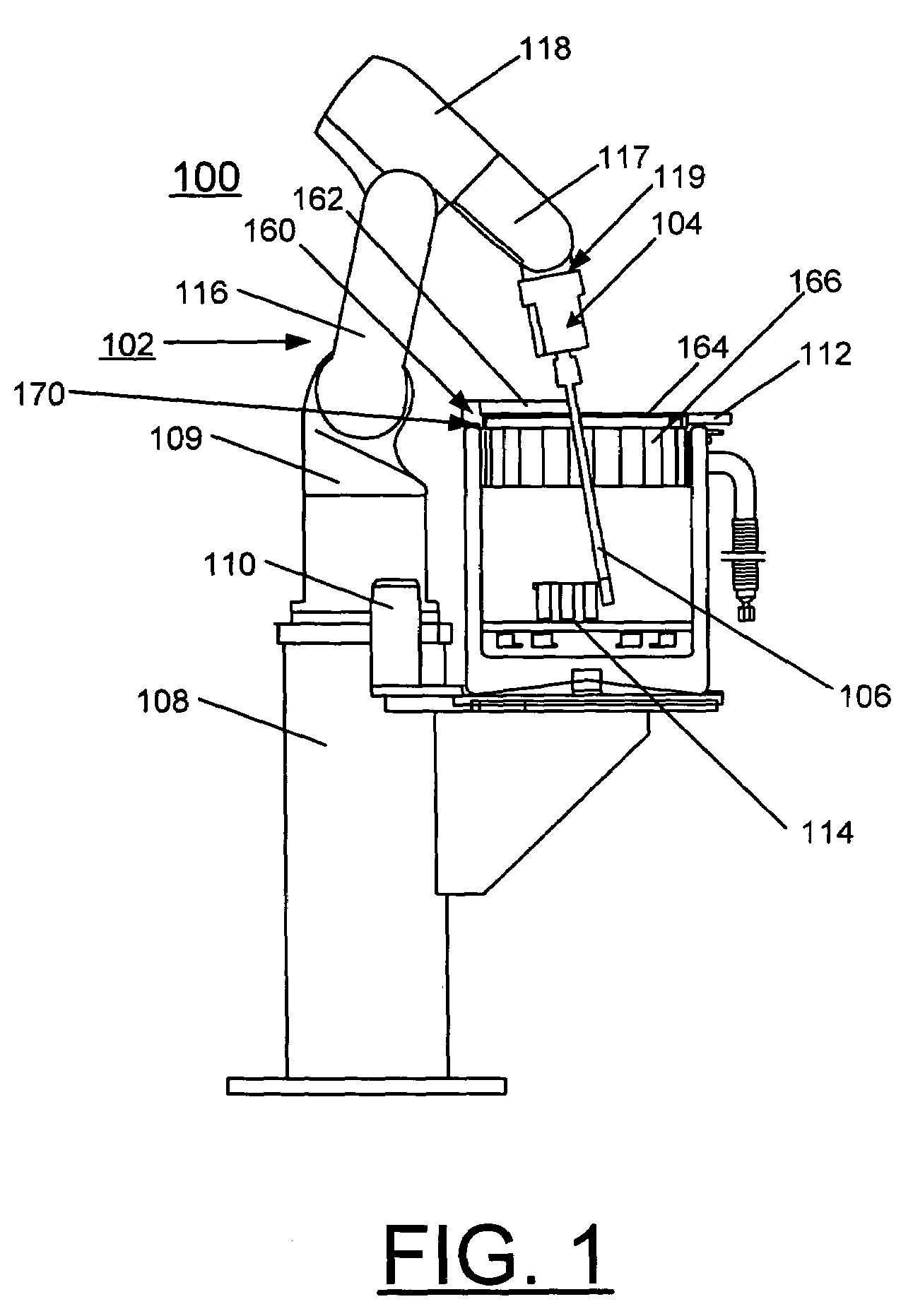Robot-based automation system for cryogenic crystal sample mounting
a robotic and crystal technology, applied in the field of robotic and crystal crystal mounting and alignment, can solve the problems of limiting the collection step of high throughput x-ray data collection, the current capability of instruments at third generation synchrotron beamlines, and increasing the number of samples to be investigated, so as to achieve the effect of maximizing the dewar space usage and near-micron positioning repeatability
- Summary
- Abstract
- Description
- Claims
- Application Information
AI Technical Summary
Benefits of technology
Problems solved by technology
Method used
Image
Examples
Embodiment Construction
[0023]In accordance with features of the invention, a robotic system is provided that can efficiently and effectively carry out this process, without human intervention and which can hold a total, for example, of 120 different crystal samples at the correct cryogenic temperature. This invention should dramatically increase the rate at which protein structures can be determined experimentally.
[0024]Having reference now to the drawings, FIG. 1 shows the side-view and top-view of the robot-based automation system for cryogenic crystal sample mounting generally designated by reference character 100 in accordance with the preferred embodiment. System 100 includes an industrial robot arm generally designated by reference character 102.
[0025]In accordance with features of the invention, system 100 provides an industrial robot-based automation system for cryogenic crystal sample mounting. With this system 100, for example up to 120 of crystal samples, in eight magazines, each containing 15 ...
PUM
 Login to View More
Login to View More Abstract
Description
Claims
Application Information
 Login to View More
Login to View More - R&D
- Intellectual Property
- Life Sciences
- Materials
- Tech Scout
- Unparalleled Data Quality
- Higher Quality Content
- 60% Fewer Hallucinations
Browse by: Latest US Patents, China's latest patents, Technical Efficacy Thesaurus, Application Domain, Technology Topic, Popular Technical Reports.
© 2025 PatSnap. All rights reserved.Legal|Privacy policy|Modern Slavery Act Transparency Statement|Sitemap|About US| Contact US: help@patsnap.com



